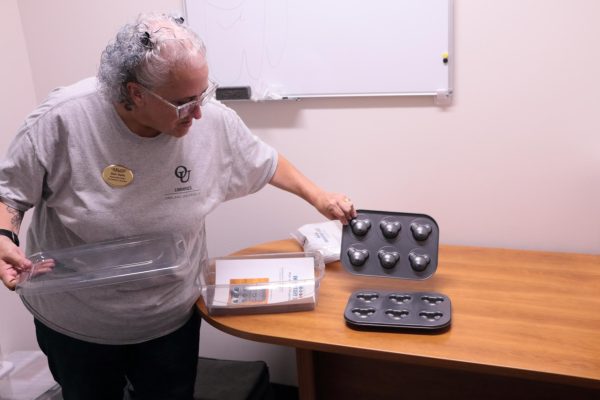Speed bumps drop out after midterms
After a pounding of a first semester, the speed bumps have dropped out of Oakland University.
The speed bumps left as quickly as they came, slipping away from their Ravine Drive and two Pioneer Drive locations in a single night. But with their departure comes the questions – why were the speed bumps installed, and why were they removed?
The answer to both questions lay with Oakland University Police Department (OUPD) Chief of Police Mark Gordon.
According to Gordon, the Ravine and Pioneer speed bumps were installed after the traffic pattern change.
“When we took [the bumps] out there were still a lot of people using the crosswalk coming from the P11 [parking lot] and we noticed that traffic pulling around that corner was kind of moving a bit too fast for our comfort,” Gordon said.
Wanting to make sure pedestrians would be safe crossing the crosswalk, OUPD set up the speed bumps at both sides of the corner.
According to Gordon, the stop signs at the intersection were removed at the recommendation of the Transportation Improvement Association (TIA). After a study in August 2018, the TIA figured by removing the stop signs at the corner, traffic would move more fluidly at OU.
Pedestrian safety was also a key factor in the reinstallation of speed bumps around Hillcrest.
The bumps were installed to slow down student traffic around heavy construction equipment and were removed after Hillcrest was complete. But after the bumps were gone, the OUPD noticed cars were moving much faster than they were before.
With students crossing Pioneer Drive to get to the P35 parking lot, OUPD saw something had to be done to prevent an accident.
“So we thought since speeds are increasing we know that the speed bumps slowed traffic down during construction, we felt it was necessary to put them in again to slow traffic down near the crosswalks for Hillcrest,” Gordon said.
Despite the public safety benefits of the bumps, they have been removed not even a semester after installation. Why remove the bumps so soon, if at all?
“The snowplows will grab [the bumps] as they’re removing snow,” Gordon said. “If you want adequate snowplowing you have to remove them for the winter months. [The bumps] damage the equipment if you hit them.”
According to Gordon, the data from the temporary speed bumps is being evaluated, though there have not been any discussions about installing permanent speed bumps. Reducing the speed limit on Pioneer Drive to 15 mph is also not a viable option due to the distances between locations.
Hillcrest resident Gordon McLeod supports the speed bumps as a traffic management tool, though is indifferent about their removal for the winter.
“I liked having speed bumps there for turning out – they were kind of a nuisance while driving around campus,” McLeod said. “I can see why they would take them out for the winter.”
Commuter Reshall Yatooma was happy about the speed bumps being removed due to not seeing the practicality of the bumps. Upon learning about the purpose the bumps served, her opinion was not swayed heavily.
“I still think that people are going to speed no matter what,” Yatooma said. “You would have to create such a big deterrent from people actually speeding – like the presence of more cops. It’s just hard to control people’s behavior when it comes to that.”





